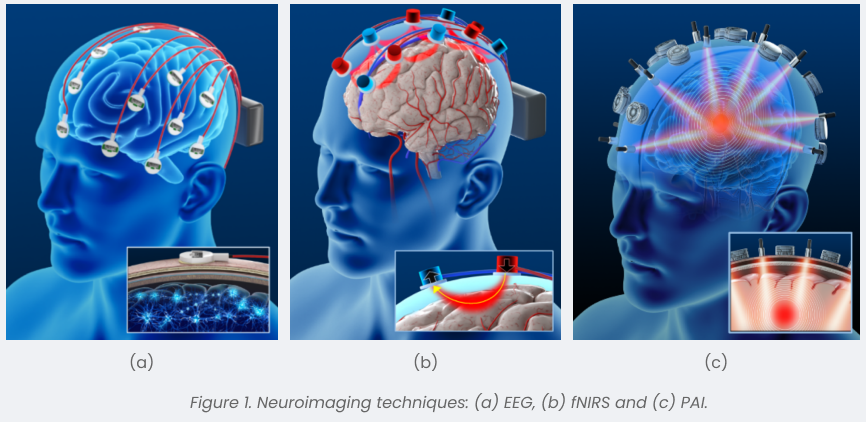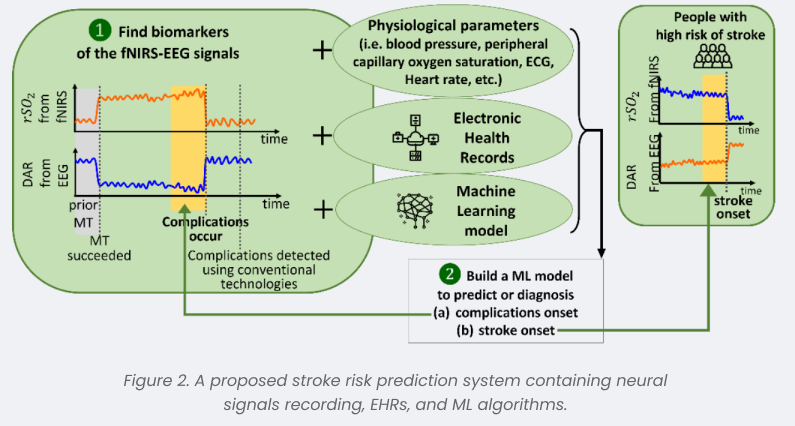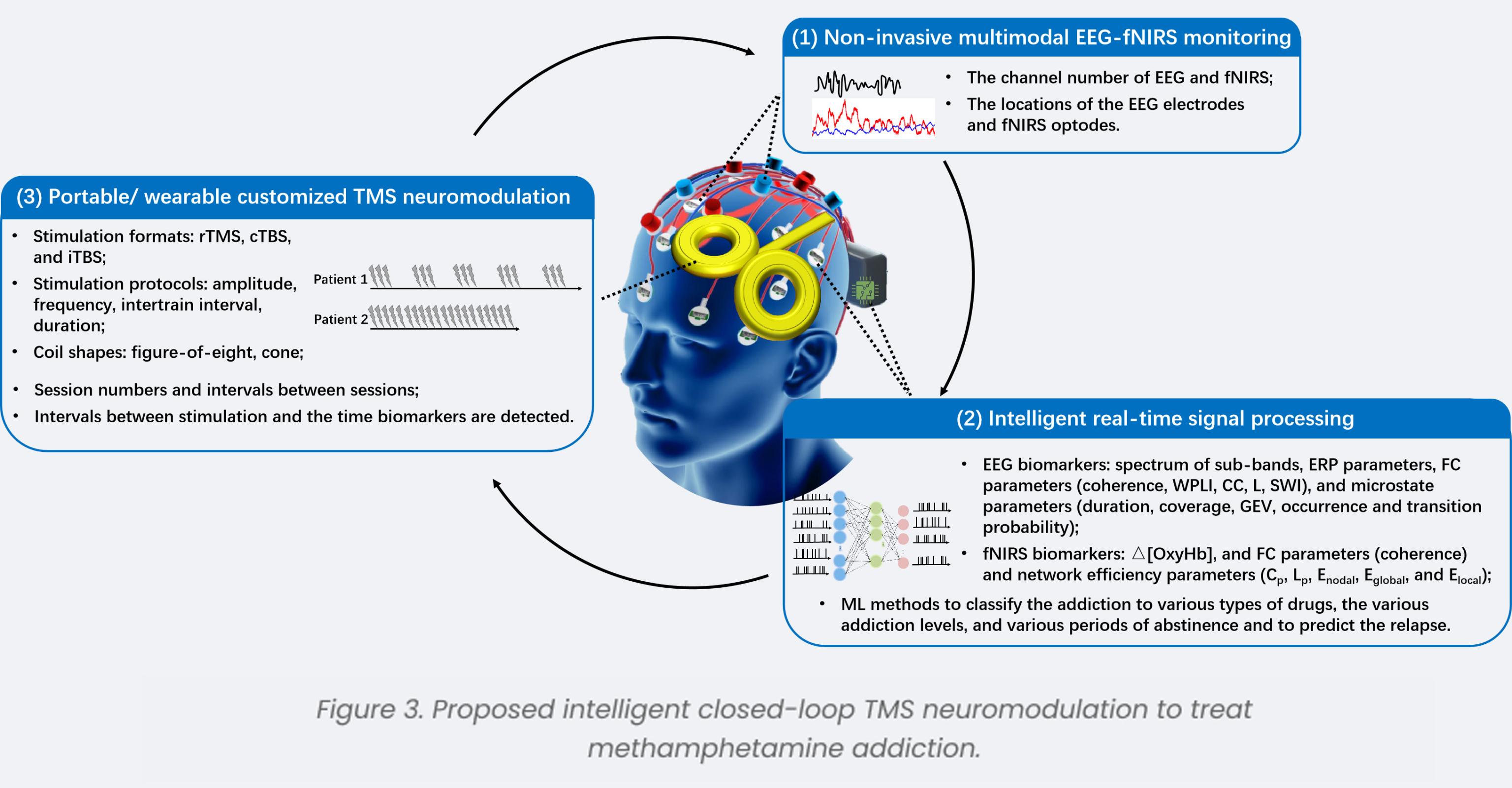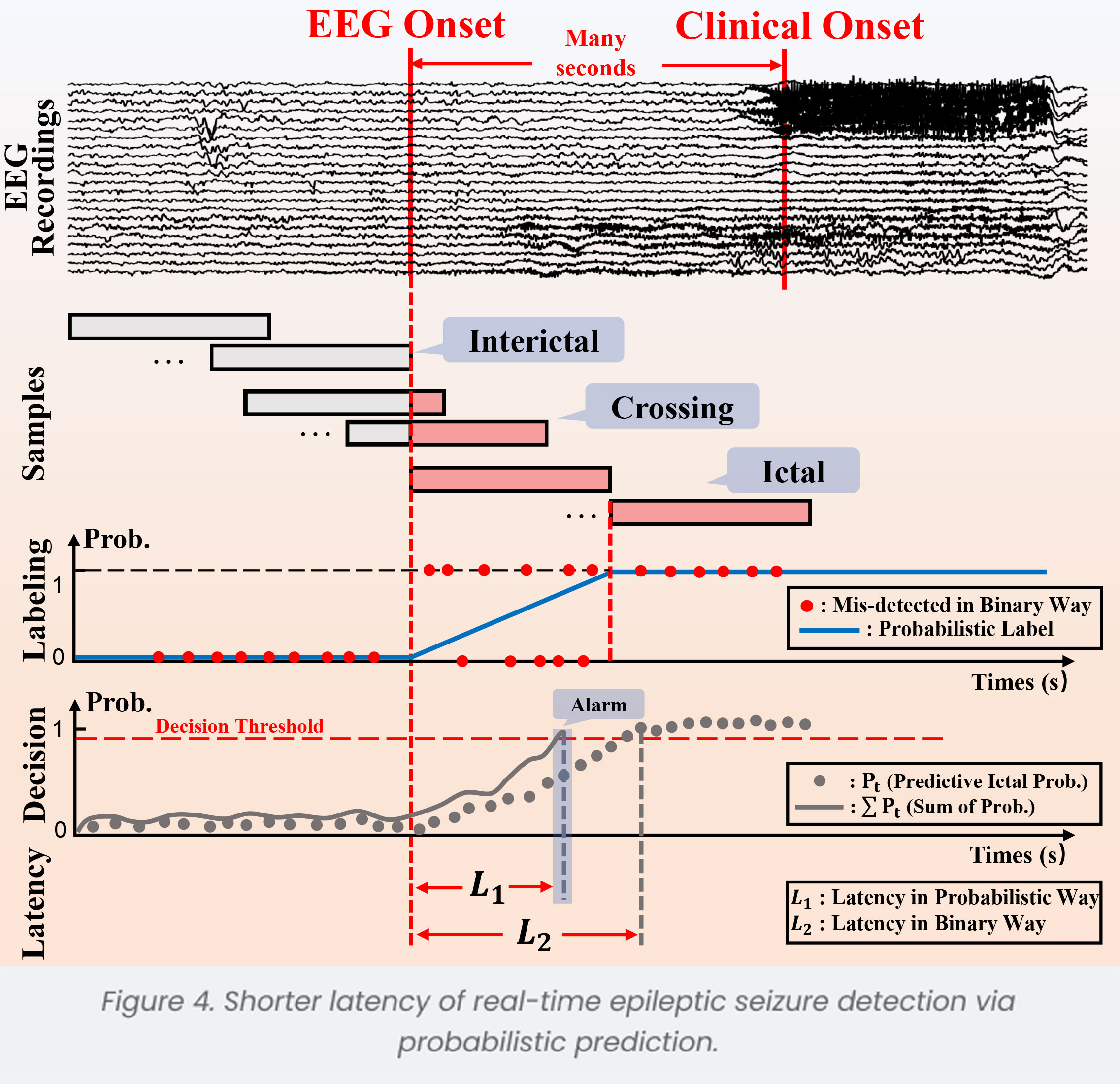Applications of Neuroimaging Techniques on Brain Disorders
The brain activities reflect our cognitive, physiological, and psychological conditions. At CenBRAIN Neurotech, we study various techniques focusing on multimodal neuroimaging systems for real-time brain activity monitoring. We explore the applications of multimodal functional near-infrared spectroscopy (fNIRS) and electroencephalogram (EEG) to diagnose and predict neurodegenerative diseases, Figure 1a, b. In addition, photoacoustic imaging (PAI) is another emerging neuroimaging technique in our group, Figure 1c.

At CenBRAIN Neurotech, protocols are designed to study the changes in electrical and hemodynamic signals during various physical conditions, such as performing memory tasks, mental arithmetic, under mental stress, or during imaginary conditions. Collected signals present the changes in neural activity and neurovascular coupling caused by the stimulations. Moreover, these recordings are promising to be used for clinical applications, such as diagnosis, monitoring, outcome, onset events detection, and earlier prediction.
Integrating wearable multimodal technologies for stroke risk prediction is a future trend. We review the wearable-based technologies intended for real-time monitoring of stroke-related physiological parameters [1]. We also report the trend of integrating these wearables into the Internet of Things (IoT) and combining electronic health records (EHRs) and machine learning (ML) algorithms to establish a stroke risk prediction system, Figure 2.

We have explored the various applications of fNIRS on stroke patients [2]. We suggested that the standard deviation (STD) of fNIRS signals can be a biomarker to predict the outcome of mechanical thrombectomy [3]. Furthermore, we demonstrated that the average of real-time fNIRS signals recorded during carotid artery stenting can be a potential parameter to predict if complications resulting from the hypotension will occur [4].
Regarding rehabilitation applications, we proposed novel signal analysis approaches for the EEG and fNIRS signals recorded during motor imagery. We aim to increase the accuracy of distinguishing different motions during motor imagery. Furthermore, visual guidance is implemented to study the effect of improving the accuracy of motor imagery actions [5, 6].
CenBRAIN Neurotech proposed a dynamic stroke risk prediction model [7]. This model applied longitudinal data with the backward joint model to construct the three-year stroke risk prediction model. This model can achieve an accuracy of 0.926 when considering three longitudinal measurements. For stroke patients, this model can show the increment in stroke risk over time, providing a better warning effect for high-risk patients.
Closed-loop Neuromodulations
CenBRAIN Neurotech investigates various neuromodulation techniques to treat brain diseases. Wearable neuroimaging recordings, neural biomarkers detection, and outcomes evaluation modules form a closed-loop system to increase the efficiency of a neuromodulation system. We have proposed a closed-loop neuromodulation system, including multimodal EEG-fNIRS neuro signal recording, real-time signal analysis, and transcranial magnetic stimulation (TMS) to treat drug addiction efficiently, Figure 3 [8].

The closed-loop neuromodulation system is also applied to stroke and mental disorders. Stroke disrupts corticomuscular connection and results in motor function deficits. Delivering neuromodulation based on abnormal corticomuscular coherence patterns could provide individualized therapy to facilitate connection reestablishment. At CenBRAIN Neurotech, we work with a rat stroke model to validate the mechanism. On the other hand, the number of people suffering from mental disorders, including depression and anxiety, has increased worldwide. We explore various types of interventions combined with physiological signal recording. The interventions can be personalized based on the real-time recorded neural signals.
Epilepsy Detection and Prediction Based on Al- assisted Models
Epilepsy affects around 1% of the population worldwide. Real-time epileptic seizure prediction and early detection can fundamentally benefit patients. To improve seizure prediction, we propose an end-to-end deep learning model intended for accurate and efficient seizure prediction [9, 10]. In addition, data imbalance is a vital issue that adversely affects seizure prediction. We synthesize artificial EEG signals via GAN to overcome this [11]. As for timely early seizure detection, we introduce a crossing period and define the seizure detection task as a regression task to obtain significantly short seizure detection latency, Figure 4 [12]. Furthermore, we implement a novel video-based seizure detection task with short detection latency and low FDR using the proposed skeleton-based spatiotemporal ViG model [submitted to ECCV'24].

Photoacoustic lmaging
In exploring modern medical imaging technologies, especially for diagnosing and monitoring brain diseases, photoacoustic imaging (PAI) technology has demonstrated its unique advantages and prospects for development.
Firstly, we reviewed the current state of development and potential applications of PAI in monitoring stroke diseases, emphasizing its significance as a non-invasive technique in precision medicine, and proposed research directions and solutions based on the existing challenges, Figure 5 [13].

Further, we summarized the development of PAI in brain diseases, from principles to practical applications, showcasing the progress and trends of this technology in medical imaging [14]. Subsequently, we investigated the propagation mechanism of photoacoustic (PA) signals in the brain and developed a preliminary simulation model based on these signals for the human brain. Our research includes optical propagation, biological heat transfer, and thermal expansion, exploring the initial mechanism of PA signal generation. This investigation provides a theoretical foundation for optimizing PAI technology [15]. Moreover, we performed a Monte Carlo-Based Optical Simulation of Optical Distribution in Deep Brain Tissues Using Sixteen Optical Sources. We provide a reference for evaluating the optical propagating depth and resolution from an optical simulation aspect, and the work can potentially optimize the performance of optical-based techniques [16].
We expanded our perspective from specific disease diagnostics to broader public health issues. We proposed a closed-loop system that integrates PAI with other modules for early detection and treatment of the novel coronavirus, demonstrating our team's ability to integrate across disciplines [17].
This series of studies highlights the important role of PAI in the diagnosis and treatment monitoring of brain diseases and showcases its application prospects in addressing global health challenges.
References
[1]
Y.-H. Chen, M. Sawan, "Trends and Challenges of Wearable Multimodal Technologies for Stroke Risk Prediction," Sensors, 2021.[2]
Y.-H. Chen, M. Sawan, "Monitoring Brain Activities Using fNIRS to Avoid Stroke," in Infrared Spectroscopy - Perspectives and Applications, IntechOpen, 2022.[3]
Y.-H. Chen, K. Liu, X. Gu, Z. Zhang, C. Yin, M. Sawan, "fNIRS Monitoring During Mechanical Thrombectomy for Outcomes Prediction," in 2023 7th International Conference on Biomedical Engineering and Applications (ICBEA), 21-23 April 2023.[4]
Y.-H. Chen, K. Liu, X. Gu, Z. Zhang, C. Yin, M. Sawan, "fNIRS Monitoring During Carotid Artery Stenting for Outcomes Prediction," in The 11th International Conference on E-Health and Bioengineering - EHB 2023.[5]
J. Wang, Y.-H. Chen, J. Yang, M. Sawan, "Intelligent Classification Technique of Hand Motor Imagery Using EEG Beta Rebound Follow-Up Pattern," Biosensors, 2022.[6]
T. Wang, Y.-H. Chen, M. Sawan, "Exploring the Role of Visual Guidance in Motor Imagery-Based Brain-Computer Interface: An EEG Microstate-Specific Functional Connectivity Study," Bioengineering, 2023.[7]
W. Zheng, Y.-H. Chen, M. Sawan, "Longitudinal Data to Enhance Dynamic Stroke Risk Prediction," Healthcare, 2022.[8]
Y.-H. Chen, J. Yang, H. Wu, K. T. Beier, M. Sawan, "Challenges and future trends in wearable closed-loop neuromodulation to efficiently treat methamphetamine addiction," (in English), Frontiers in Psychiatry, 2023.[9]
Y. Xu, J. Yang, S. Zhao, H. Wu, M. Sawan, "An End-to-End Deep Learning Approach for Epileptic Seizure Prediction," in 2020 2nd IEEE International Conference on Artificial Intelligence Circuits and Systems (AICAS), 2020.[10]
S. Zhao, J. Yang, Y. Xu, M. Sawan, "Binary Single-Dimensional Convolutional Neural Network for Seizure Prediction," in 2020 IEEE International Symposium on Circuits and Systems (ISCAS), 2020.[11]
Y. Xu, J. Yang, M. Sawan, "Multichannel Synthetic Preictal EEG Signals to Enhance the Prediction of Epileptic Seizures," IEEE Transactions on Biomedical Engineering, 2022.[12]
Y. Xu, J. Yang, W. Ming, S. Wang, M. Sawan, "Shorter latency of real-time epileptic seizure detection via probabilistic prediction," Expert Systems with Applications, 2024.[13]
X. Yang, Y.-H. Chen, F. Xia, M. Sawan, "Photoacoustic imaging for monitoring of stroke diseases: A review," Photoacoustics, 2021.[14]
X. Yang, Y. H. Chen, M. Sawan, "Photoacoustic Generation in Human Brain with Embedded Blood Vessel: Modeling and Simulation," in 2021 Photonics & Electromagnetics Research Symposium (PIERS), 2021.[15]
X. Yang, Y.-H. Chen, M. Sawan, "Photoacoustic Imaging for Human Brain Diseases: Applications and Trends," in Recent Advancements in Smart Remote Patient Monitoring, Wearable Devices, and Diagnostics Systems, IGI Global, 2023.[16]
X. Yang et al., "Monte Carlo-Based Optical Simulation of Optical Distribution in Deep Brain Tissues Using Sixteen Optical Sources," Bioengineering, 2024.[17]
G. Rong et al., "A Closed-Loop Approach to Fight Coronavirus: Early Detection and Subsequent Treatment," Biosensors, 2022.







